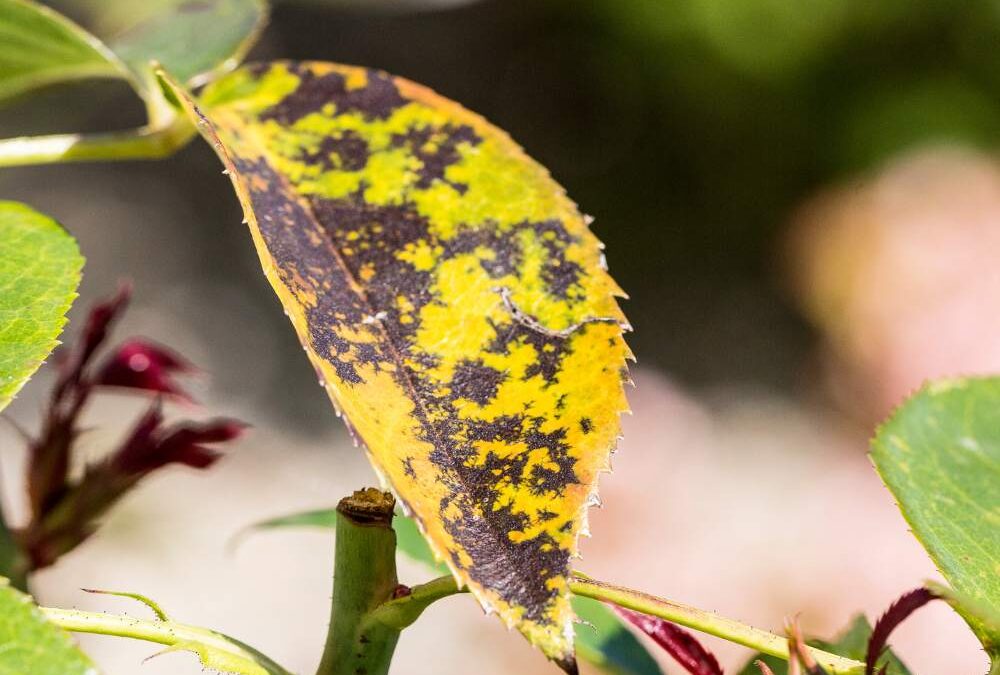Florida-based tree service experts educate their customers on leaf spot.
Should You Be Concerned About Spotty Leaves?
Besides being known for the stereotypical beautiful weather, crazy stories and retirees, Florida is renowned for the beauty of its flora. Whether evergreen or deciduous, native trees are an important part of this state’s heritage. Homeowners are often very proud of their lovely landscaping, so when they see unsightly spots on their tree’s leaves, they may be concerned. Are spots on leaves something to worry about? The short answer is maybe. Further investigation is required to get to the root of the problem.
Reasons for Spots on Leaves
There are many causes of dead and dying spots on leaves, so it may take an certified arborist to determine the actual cause and whether or not it is actually threatening to the life of the tree. Weather phenomena such as hail and high winds can do physical damage to trees and may result in leaf loss or injury. Pests, especially sucking insects, eat holes in the leaves and may leave them with dying blotches or rings. Even poor tree care such as over fertilizing, overwatering or underwatering can result in blotchy leaves. The primary reason that will be discussed here is a group of tree diseases known as leaf spot.
The Primary Causes of Leaf Spot and Leaf Blotch
Leaf spot, which usually presents as freckle-like spots on leaves, and leaf blotch, which tends to encompass large portions of the leaf, are most often caused by fungal infections, although some bacteria are responsible as well. The fungal spores are transferred to the tree via wind or rain splashes and tend to develop in late spring and early summer in periods of high heat and humidity (more things Florida is known for).They can affect just about any type of tree, but it is more noticeable on broad-leaved deciduous trees like maples, oaks, and sycamores.
Some of the more common and easily recognizable leaf spot fungi are:
- Anthracnose
- Cercospora Leaf Spot
- Maple Tar Spot
- Powdery Mildew
All of these fungal diseases present with spots of some kind, but they are very different in coloration. They can range in color from red and orange to purple and black.
What to Do to Help Your Tree
Though most leaf spot is merely cosmetic and will not harm the tree, it should be noted that there are instances where the tree defoliation that results can send the tree into decline. The leaves that are visibly affected by the leaf spot cannot be saved, but the tree itself can.
Here are a few of the things that can be done to keep your tree healthy:
- Tree Pruning: Using sterilized tools, prune the branches that have a high number of leaves affected by leaf spot. Pruning back for overcrowding is also helpful for reducing transmission between branches.
- Soil Testing: Test your soil to see if the tree needs fertilizer.
- Keep Leaves Dry: Wet leaves are a breeding ground for fungi. Water the tree using a soaker hose when it is necessary.
- Anti-Fungal Spray: If the leaf spot shows up three years in a row, it may be time to use an antifungal spray to prevent its return.
What a Tree Service Company Can Do For You and Your Tree
A certified arborist can identify the leaf spot that you have and can act quickly to make sure your tree remains healthy. They can perform tree trimming and pruning without concern for overdoing it. The average homeowner can kill the tree they are trying to help with over-trimming. Arborists are about tree health care, not just tree removal, and they can help you plan the best steps for your entire yard.
About Any Town Tree
Locally owned and operated out of Naples, FL, Any Town Tree offers tree trimming, removal, and stump grinding on commercial and residential properties. Call from anywhere in Naples and the surrounding areas for a quote today.

